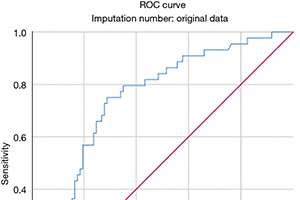Surgical repair of post-infarction ventricular free-wall rupture in the Netherlands: data from a nationwide registry
Abstract
Background: Ventricular free-wall rupture (VFWR) is an infrequent but catastrophic complication of acute myocardial infarction (AMI). Most reports about outcome after surgical treatment are single-center experiences. We examined the early and mid-term outcomes after surgical repair of post-AMI VFWR using the Netherlands Heart Registration (NHR) database.
Methods: We included data from NHR patients (>18 years old) who underwent surgery for post-AMI VFWR between 2014 and 2019. The primary end-point was in-hospital mortality. Secondary outcomes included postoperative complications and mid-term survival.
Results: The study included 148 patients (54.7% male, mean age 66.5±11.1 years). Critical preoperative status was found in 62.6% of subjects. In-hospital mortality was 31.1% (46 of 148). Multivariable analysis identified female sex [odds ratio (OR), 5.49; 95% confidence interval (CI): 2.24–13.46] and critical preoperative status (OR, 4.06; 95% CI: 1.36–12.13) as independent predictors of in-hospital mortality. The overall median postoperative follow-up was 2.2 (interquartile range, 0.7–3.8) years. Overall survival rates at three and five years were 58.9% and 55.7%, respectively. Among hospital survivors, only 15 (14.7%) patients died during follow-up, with a five-year survival rate of 80.8%.
Conclusions: In-hospital mortality after surgical repair of post-AMI VFWR is considerable. Female sex and preoperative critical status are independent predictors of early postoperative (in-hospital) death. Logistic EuroSCORE I can reliably predict in-hospital mortality (optimal cut-off >33%). Mid-term follow-up of patients surviving in-hospital course shows excellent results.
Cover






